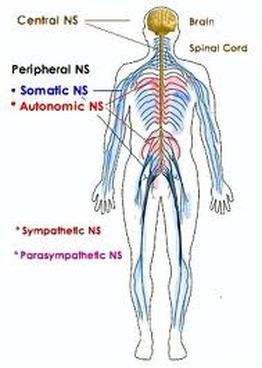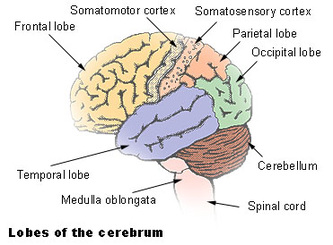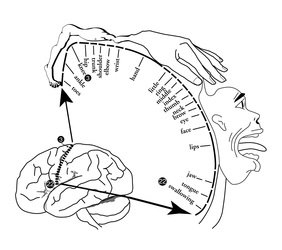You have now entered the nervous system. As you begin your fascinating journey into the nervous system, you will be learning and studying the many parts and functions of the unique system. Some of these parts include: the brain, the spinal cord and many neurons and nerve cells. Get ready, because you are about to take the ride of your lifetime!
The Nervous System

Nervous System: The nervous system controls and coordinates functions throughout the body and responds to internal and external stimulation. The COL that the nervous system follows is mainly regulation, but other COL's like transport, are performed in this system. There are many nerve receptors all over the human body, some areas have more receptors then others. For example, lips, fingers and toes have tons of receptors, meaning they are more sensitive to touch in their surroundings. The "homunculus" is the word used today to describe the body's distorted scale model that reflects the approximate space human body parts take up of the motor cortex and somatosensory cortex. As mentioned before, the lips, hands and even sex organs have more sensory neurons than other body parts, so the homunculus has large hands, lips and genitals. The scientific model of this is know as the cortical homunculus.
The Anatomy of the Nervous System
The nervous system is made up of two parts, the central nervous system, and the peripheral nervous system. The central nervous system (CNS) is the biggest part, and consists of both the brain and spinal cord. The head contains the brain, while the spinal cavity the spinal cord. The vertebra protects the spinal cord, and the skull protects the brain. Altogether, the CNS is protected by meninges, a 3 layered system of membranes, which also includes a tough, leathery outer layer called the dura mater.
The peripheral nervous system (PNS) can also be known as the nervous system structures that do not lie within the CNS. Even thought the cell bodies of the neurons belong within the brain and the spinal cord, the majority of the nerves are considered to belong to the PNS. The PNS is divided into two parts, the somatic and visceral parts. The somatic part consists of the nerves that supply the skin, joints, and muscles. The visceral part, also known as the autonomic nervous system, contains neurons that supply the internal organs, blood vessels, and glands. The autonomic nervous system itself consists of two parts: the sympathetic nervous system and the parasympathetic nervous system.
The peripheral nervous system (PNS) can also be known as the nervous system structures that do not lie within the CNS. Even thought the cell bodies of the neurons belong within the brain and the spinal cord, the majority of the nerves are considered to belong to the PNS. The PNS is divided into two parts, the somatic and visceral parts. The somatic part consists of the nerves that supply the skin, joints, and muscles. The visceral part, also known as the autonomic nervous system, contains neurons that supply the internal organs, blood vessels, and glands. The autonomic nervous system itself consists of two parts: the sympathetic nervous system and the parasympathetic nervous system.


